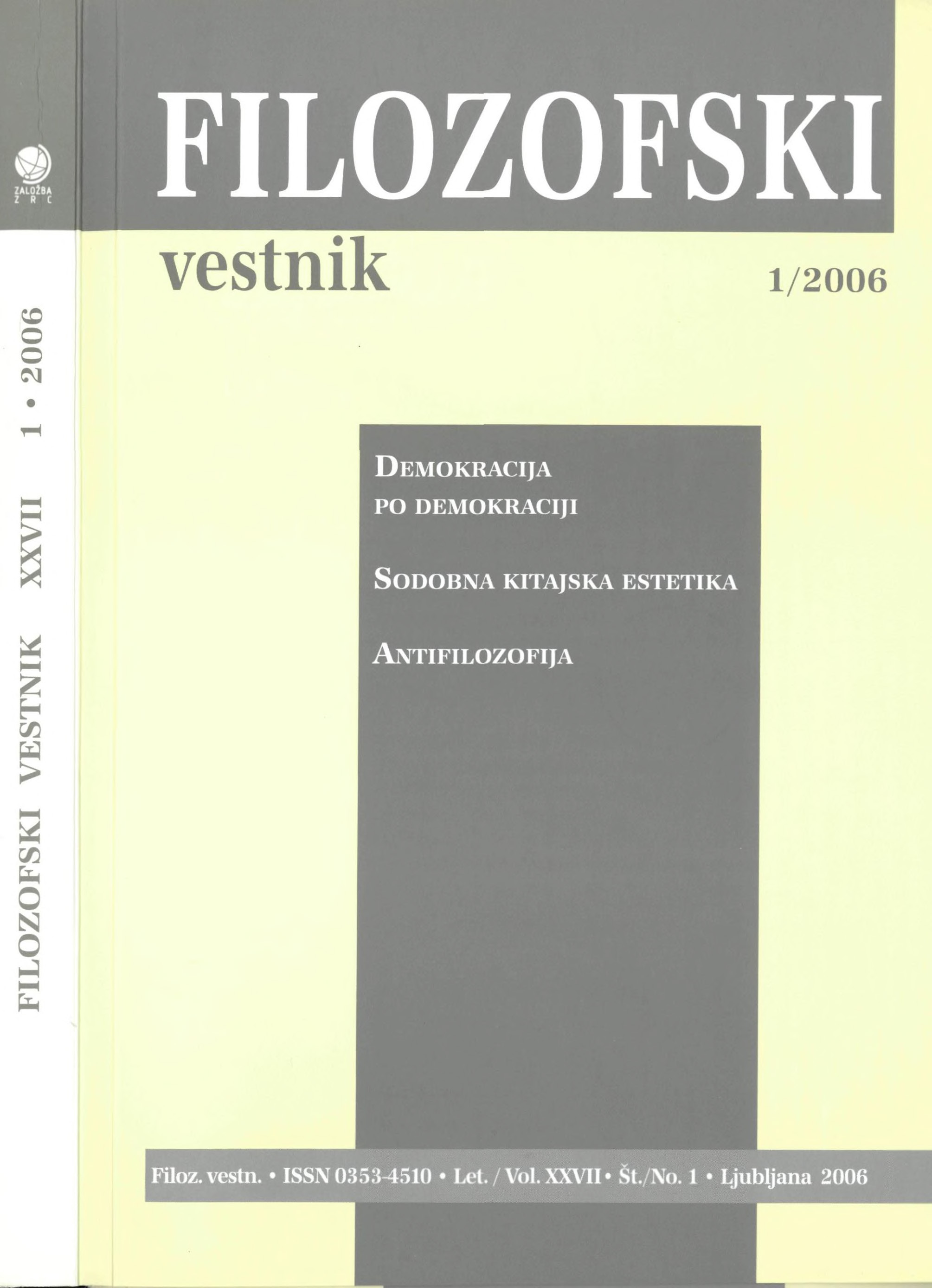Vzajemni vplivi med zahodno in kitajsko estetiko
Ključne besede:
estetika, Vzhod-Zahod, paradigme, transkulturno preoblikovanjePovzetek
Moderna kitajska estetika se je pojavila kot oblika neprekinjenih izmenjav in navzkrižij med zahodnimi kulturami in kitajsko kulturo v dvajsetem stoletju. Z vidika njenih metod in vsebine je bila glavna značilnost kitajske estetike povezovanje v celoto in prisvajanje zgodovinskega v modernem skozi kulturno interakcijo med zahodom in vzhodom. Zgodovinsko gledano moderna kitajska estetika izpričuje pet glavnih paradigem glede na njen razvoj od otroštva do dobe zrelosti v razponu stotih let. Teh pet paradigem vključuje: (1) fragmentarno obravnavo zahodne estetike s pomočjo prevajanja in uvajanja; (2) teoretsko vključevanje s pomočjo ustvarjalne reforme, ki je bila utemeljena na stikih med vzhodom in zahodom; (3) interdisciplinarno in mnogostransko prakso umetnostne vzgoje; (5) transkulturne premisleke, ki so izhajali iz različnih izvorov kultur, tako iz kitajske kot iz kulture starih Grkov in modernih evropejcev kot njenih nasprotij. Avtor poudarja, da se je moderna kitajska estetike kot celota razvila posebej zahvaljujoč transkulturnemu preoblikovanju in ustvarjalnemu prisvajanju.Prenosi
Podatki o prenosih še niso na voljo.
Prenosi
Objavljeno
2016-03-05
Kako citirati
Keping, W. (2016). Vzajemni vplivi med zahodno in kitajsko estetiko. Filozofski Vestnik, 27(1). Pridobljeno od https://ojs.zrc-sazu.si/filozofski-vestnik/article/view/4365
Številka
Rubrike
Sodobna kitajska estetika
Licenca
Avtorji jamčijo, da je delo njihova avtorska stvaritev, da v njem niso kršene avtorske pravice tretjih oseb ali kake druge pravice. V primeru zahtevkov tretjih oseb se avtorji zavezujejo, da bodo varovali interese založnika ter da bodo povrnili morebitno škodo.
Podrobneje v rubriki: Prispevki





